- Home
- Roald Dahl
More About Boy
More About Boy Read online
Contents
Starting-point
Papa and Mama
More About Mama
Kindergarten, 1922–3
A Grand Time
Llandaff Cathedral School, 1923–5 (age 7–9)
The bicycle and the sweet-shop
The Great Mouse Plot
A Life Without Sweets
Going to Norway
The magic island
A visit to the doctor
The Last Lap
St Peter’s, 1925–9 (age 9–13)
First day
Writing home
The Matron
Homesickness
A drive in the motor-car
The Meccano Chariot
Captain Hardcastle
How I Became a Writer
Little Ellis and the boil
Goat’s tobacco
Repton and Shell, 1929–36 (age 13–20)
Getting dressed for the big school
Boazers
Painful Punishments
The Headmaster
Chocolates
Ten Horrid Little Boys and Girls
Corkers
Fagging
That Awful Cold Bath
Games and photography
Goodbye school
p.s.
A Dahl-tastic Quiz
Author’s Note
An autobiography is a book a person writes about his own life and it is usually full of all sorts of boring details.
This is not an autobiography. I would never write a history of myself. On the other hand, throughout my young days at school and just afterwards a number of things happened to me that I have never forgotten.
None of these things is important, but each of them made such a tremendous impression on me that I have never been able to get them out of my mind. Each of them, even after a lapse of fifty and sometimes sixty years, has remained seared on my memory.
I didn’t have to search for any of them. All I had to do was skim them off the top of my consciousness and write them down.
Some are funny. Some are painful. Some are unpleasant. I suppose that is why I have always remembered them so vividly. All are true.
R. D.
* * *
Roald Dahl was sixty-eight when Boy was first published.
* * *
Books by Roald Dahl
THE BFG
BOY: TALES OF CHILDHOOD
CHARLIE AND THE CHOCOLATE FACTORY
CHARLIE AND THE GREAT GLASS ELEVATOR
DANNY THE CHAMPION OF THE WORLD
GEORGE’S MARVELLOUS MEDICINE
GOING SOLO
JAMES AND THE GIANT PEACH
MATILDA
THE WITCHES
For younger readers
THE ENORMOUS CROCODILE
ESIO TROT
FANTASTIC MR FOX
THE GIRAFFE AND THE PELLY AND ME
THE MAGIC FINGER
THE TWITS
Picture books
DIRTY BEASTS (with Quentin Blake)
THE ENORMOUS CROCODILE (with Quentin Blake)
THE GIRAFFE AND THE PELLY AND ME (with Quentin Blake)
THE MINPINS (with Patrick Benson)
REVOLTING RHYMES (with Quentin Blake)
Plays
THE BFG: PLAYS FOR CHILDREN (Adapted by David Wood)
CHARLIE AND THE CHOCOLATE FACTORY: A PLAY (Adapted by Richard George)
DANNY THE CHAMPION OF THE WORLD: PLAYS FOR CHILDREN (Adapted by David Wood)
FANTASTIC MR FOX: A PLAY (Adapted by Sally Reid)
JAMES AND THE GIANT PEACH: A PLAY (Adapted by Richard George)
THE TWITS: PLAYS FOR CHILDREN (Adapted by David Wood)
THE WITCHES: PLAYS FOR CHILDREN (Adapted by David Wood)
Teenage fiction
THE GREAT AUTOMATIC GRAMMATIZATOR AND OTHER STORIES
RHYME STEW
SKIN AND OTHER STORIES
THE VICAR OF NIBBLESWICKE
THE WONDERFUL STORY OF HENRY SUGAR AND SIX MORE
Collections
THE ROALD DAHL TREASURY
SONGS AND VERSE
For Alfhild, Else, Asta, Ellen and Louis
Foreword
Even though I was born in the same street as Roald Dahl, I never knew him as a boy (however I was lucky enough to marry him years later, so mustn’t grumble too much).
Although he told me a lot about his fantastical childhood, MORE ABOUT BOY has let me into some of the secrets he left out. My, what a story! Of course, it has all the familiar ingredients of growing-up, but it is also the tale of how so many of Roald’s books came to be written. Look hard enough, and it’s all there.
In 2005 – fifteen years after my husband died – the Roald Dahl Museum and Story Centre opened in his hometown of Great Missenden in England. The Museum is home to Roald’s archive, full of all his jottings and scribbles and crossings out, as well as many of the letters and photos and school reports he mentioned in BOY. Much of this archive has never been seen before though, so it seemed a good idea to share a little of it with you now … which is why you are holding MORE ABOUT BOY. I do hope you enjoy reading – for the first time – about Joss Spivvis and the joys of Meccano and what happened next to the horrible Mrs Pratchett … I certainly did!
Felicity Dahl
Gipsy House
Great Missenden
Papa and Mama
My father, Harald Dahl, was a Norwegian who came from a small town near Oslo, called Sarpsborg. His own father, my grandfather, was a fairly prosperous merchant who owned a store in Sarpsborg and traded in just about everything from cheese to chicken-wire.
I am writing these words in 1984, but this grandfather of mine was born, believe it or not, in 1820, shortly after Wellington had defeated Napoleon at Waterloo. If my grandfather had been alive today he would have been one hundred and sixty-four years old. My father would have been one hundred and twenty-one. Both my father and my grandfather were late starters so far as children were concerned.
Harald Dahl (1863–1920)
* * *
Roald Dahl’s grandfather was Octovias Dahl. He and his wife Ellen had six children: three boys – Harald (Roald Dahl’s father), Oscar and Truls; and three girls – Ragna, Olga and Clara.
* * *
When my father was fourteen, which is still more than one hundred years ago, he was up on the roof of the family house replacing some loose tiles when he slipped and fell. He broke his left arm below the elbow. Somebody ran to fetch the doctor, and half an hour later this gentleman made a majestic and drunken arrival in his horse-drawn buggy. He was so drunk that he mistook the fractured elbow for a dislocated shoulder.
‘We’ll soon put this back into place!’ he cried out, and two men were called off the street to help with the pulling. They were instructed to hold my father by the waist while the doctor grabbed him by the wrist of the broken arm and shouted, ‘Pull, men, pull! Pull as hard as you can!’
The pain must have been excruciating. The victim screamed, and his mother, who was watching the performance in horror, shouted ‘Stop!’ But by then the pullers had done so much damage that a splinter of bone was sticking out through the skin of the forearm.
This was in 1877 and orthopaedic surgery was not what it is today. So they simply amputated the arm at the elbow, and for the rest of his life my father had to manage with one arm. Fortunately, it was the left arm that he lost and gradually, over the years, he taught himself to do more or less anything he wanted with just the four fingers and thumb of his right hand. He could tie a shoelace as quickly as you or me, and for cutting up the food on his plate, he sharpened the bottom edge of a fork so that it served as both knife and fork all in one. He kept his ingenious instrument in a slim leather case and carried
it in his pocket wherever he went. The loss of an arm, he used to say, caused him only one serious inconvenience. He found it impossible to cut the top off a boiled egg.
* * *
‘Amputation’ comes from the Latin word ‘amputare’, meaning ‘lop off’. Surgical amputations date back at least as far as the fourth century BC, and probably further. There were huge improvements in surgical techniques,anaesthetics and antiseptics before Harald Dahl was operated on. But it must still have hurt.
* * *
My father was a year or so older than his brother Oscar, but they were exceptionally close, and soon after they left school, they went for a long walk together to plan their future. They decided that a small town like Sarpsborg in a small country like Norway was no place in which to make a fortune. So what they must do, they agreed, was go away to one of the big countries, either to England or France, where opportunities to make good would be boundless.
Their own father, an amiable giant nearly seven foot tall, lacked the drive and ambition of his sons, and he refused to support this tomfool idea. When he forbade them to go, they ran away from home, and somehow or other the two of them managed to work their way to France on a cargo ship.
* * *
To follow their journeys, have a look at the map at the end of this chapter.
* * *
From Calais they went to Paris, and in Paris they agreed to separate because each of them wished to be independent of the other. Uncle Oscar, for some reason, headed west for La Rochelle on the Atlantic coast, while my father remained in Paris for the time being.
The story of how these two brothers each started a totally separate business in different countries and how each of them made a fortune is interesting, but there is no time to tell it here except in the briefest manner.
Take my Uncle Oscar first. La Rochelle was then, and still is, a fishing port. By the time he was forty he had become the wealthiest man in town. He owned a fleet of trawlers called ‘Pêcheurs d’Atlantique’ and a large canning factory to can the sardines his trawlers brought in. He acquired a wife from a good family and a magnificent town house as well as a large château in the country. He became a collector of Louis XV furniture, good pictures and rare books, and all these beautiful things together with the two properties are still in the family. I have not seen the château in the country, but I was in the La Rochelle house a couple of years ago and it really is something.
The furniture alone should be in a museum.
* * *
Harald Dahl and Ludwig Aadnesen set up business in 1901 in Cardiff.
* * *
While Uncle Oscar was bustling around in La Rochelle, his one-armed brother Harald (my own father) was not sitting on his rump doing nothing. He had met in Paris another young Norwegian called Aadnesen and the two of them now decided to form a partnership and become shipbrokers. A shipbroker is a person who supplies a ship with everything it needs when it comes into port – fuel and food, ropes and paint, soap and towels, hammers and nails, and thousands of other tiddly little items. A shipbroker is a kind of enormous shopkeeper for ships, and by far the most important item he supplies to them is the fuel on which the ship’s engines run. In those days fuel meant only one thing. It meant coal. There were no oil-burning motorships on the high seas at that time. All ships were steamships and these old steamers would take on hundreds and often thousands of tons of coal in one go. To the shipbrokers, coal was black gold.
My father and his new-found friend, Mr Aadnesen, understood all this very well. It made sense they told each other, to set up their shipbroking business in one of the great coaling ports of Europe. Which was it to be? The answer was simple. The greatest coaling port in the world at that time was Cardiff, in South Wales. So off to Cardiff they went, these two ambitious young men, carrying with them little or no luggage. But my father had something more delightful than luggage. He had a wife, a young French girl called Marie whom he had recently married in Paris.
In Cardiff, the shipbroking firm of ‘Aadnesen & Dahl’ was set up and a single room in Bute Street was rented as an office. From then on, we have what sounds like one of those exaggerated fairy-stories of success, but in reality it was the result of tremendous hard and brainy work by those two friends. Very soon ‘Aadnesen & Dahl’ had more business than the partners could handle alone. Larger office space was acquired and more staff were engaged. The real money then began rolling in. Within a few years, my father was able to buy a fine house in the village of Llandaff, just outside Cardiff, and there his wife Marie bore him two children, a girl and a boy. But tragically, she died after giving birth to the second child.
* * *
Harald Dahl married Marie in 1901 and they had two children: Ellen (born in 1903) and Louis (born in 1906). Marie died in 1907, aged twenty-nine. The family home in Fairwater Road, Llandaff was named ‘Villa Marie’ after her. (Roald Dahl was born here in 1916.)
* * *
When the shock and sorrow of her death had begun to subside a little, my father suddenly realized that his two small children ought at the very least to have a stepmother to care for them. What is more, he felt terribly lonely. It was quite obvious that he must try to find himself another wife. But this was easier said than done for a Norwegian living in South Wales who didn’t know very many people. So he decided to take a holiday and travel back to his own country, Norway, and who knows, he might if he was lucky find himself a lovely new bride in his own country.
Over in Norway, during the summer of 1911, while taking a trip in a small coastal steamer in the Oslofjord, he met a young lady called Sofie Magdalene Hesselberg. Being a fellow who knew a good thing when he saw one, he proposed to her within a week and married her soon after that.
* * *
Harald and Sofie’s four children were called: Astri (born in 1912), Alfhild (1914), Roald (13 September 1916) and Else (1918).
* * *
Harald Dahl took his Norwegian wife on a honeymoon in Paris, and after that back to the house in Llandaff. The two of them were deeply in love and blissfully happy, and during the next six years she bore him four children, a girl, another girl, a boy (me) and a third girl. There were now six children in the family, two by my father’s first wife and four by his second. A larger and grander house was needed and the money was there to buy it.
* * *
The big house at Radyr had the Welsh name ‘Ty Mynydd’ (‘Tee Mun-uthe’) which means ‘Mountain House’. There were greenhouses, croquet lawns, gardens and pig sties!
* * *
So in 1918, when I was two, we all moved into an imposing country mansion beside the village of Radyr, about eight miles west of Cardiff. I remember it as a mighty house with turrets on its roof and with majestic lawns and terraces all around it. There were many acres of farm and woodland, and a number of cottages for the staff. Very soon, the meadows were full of milking cows and the sties were full of pigs and the chicken-run was full of chickens. There were several massive shire-horses for pulling the ploughs and the hay-wagons, and there was a ploughman and a cowman and a couple of gardeners and all manner of servants in the house itself. Like his brother Oscar in La Rochelle, Harald Dahl had made it in no uncertain manner.
But what interests me most of all about these two brothers, Harald and Oscar, is this. Although they came from a simple unsophisticated small-town family, both of them, quite independently of one another, developed a powerful interest in beautiful things. As soon as they could afford it, they began to fill their houses with lovely paintings and fine furniture. In addition to that, my father became an expert gardener and above all a collector of alpine plants. My mother used to tell me how the two of them would go on expeditions up into the mountains of Norway and how he would frighten her to death by climbing one-handed up steep cliff-faces to reach small alpine plants growing high up on some rocky ledge. He was also an accomplished wood-carver, and most of the mirror-frames in the house were his own work. So indeed was the entire mantelpiece around the fire
place in the living-room, a splendid design of fruit and foliage and intertwining branches carved in oak.
He was a tremendous diary-writer. I still have one of his many notebooks from the Great War of 1914–18. Every single day during those five war years he would write several pages of comment and observation about the events of the time. He wrote with a pen and although Norwegian was his mother-tongue, he always wrote his diaries in perfect English.
* * *
HOW TO PRONOUNCE NORWEGIAN NAMES:
Sofie = So-fee-ah
Roald = Roo-arl
Astri = Os-tree
Alfhild = Olf-hill-d
Else = El-Sa
* * *
He harboured a curious theory about how to develop a sense of beauty in the minds of his children. Every time my mother became pregnant, he would wait until the last three months of her pregnancy and then he would announce to her that ‘the glorious walks’ must begin. These glorious walks consisted of him taking her to places of great beauty in the countryside and walking with her for about an hour each day so that she could absorb the splendour of the surroundings. His theory was that if the eye of a pregnant woman was constantly observing the beauty of nature, this beauty would somehow become transmitted to the mind of the unborn baby within her womb and that baby would grow up to be a lover of beautiful things. This was the treatment that all of his children received before they were born.

 My Uncle Oswald
My Uncle Oswald The Best of Roald Dahl
The Best of Roald Dahl The Magic Finger
The Magic Finger Charlie and the Chocolate Factory
Charlie and the Chocolate Factory Fantastic Mr Fox
Fantastic Mr Fox Matilda
Matilda Completely Unexpected Tales: Tales of the Unexpected. More Tales of the Unexpected
Completely Unexpected Tales: Tales of the Unexpected. More Tales of the Unexpected The Wonderful Story of Henry Sugar and Six More
The Wonderful Story of Henry Sugar and Six More The Twits
The Twits The BFG
The BFG Danny the Champion of the World
Danny the Champion of the World The Witches
The Witches James and the Giant Peach
James and the Giant Peach Charlie and the Great Glass Elevator
Charlie and the Great Glass Elevator Skin and Other Stories
Skin and Other Stories Kiss Kiss
Kiss Kiss Switch Bitch
Switch Bitch The Giraffe and the Pelly and Me
The Giraffe and the Pelly and Me Ah, Sweet Mystery of Life
Ah, Sweet Mystery of Life Fear
Fear The Great Automatic Grammatizator and Other Stories
The Great Automatic Grammatizator and Other Stories Someone Like You
Someone Like You Charlie and the Great Glass Elevator c-2
Charlie and the Great Glass Elevator c-2 More About Boy
More About Boy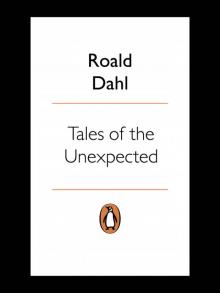 Tales of the Unexpected
Tales of the Unexpected The Umbrella Man and Other Stories
The Umbrella Man and Other Stories Dirty Beasts
Dirty Beasts Roald Dahl's Mischief and Mayhem
Roald Dahl's Mischief and Mayhem The Collected Short Stories of Roald Dahl, Volume 1
The Collected Short Stories of Roald Dahl, Volume 1 The Missing Golden Ticket and Other Splendiferous Secrets
The Missing Golden Ticket and Other Splendiferous Secrets Billy and the Minpins
Billy and the Minpins Over to You
Over to You Going Solo
Going Solo Deception
Deception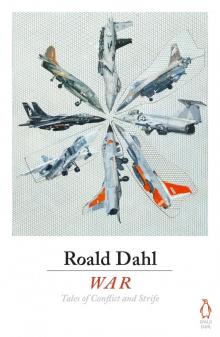 War
War Man from the South ee-3
Man from the South ee-3 More Tales of the Unexpected
More Tales of the Unexpected Trickery
Trickery Rhyme Stew
Rhyme Stew Charlie and the Chocolate Factory (Puffin Modern Classics relaunch)
Charlie and the Chocolate Factory (Puffin Modern Classics relaunch) D is for Dahl
D is for Dahl Roald Dahl Whoppsy-Whiffling Joke Book
Roald Dahl Whoppsy-Whiffling Joke Book Spotty Powder and other Splendiferous Secrets
Spotty Powder and other Splendiferous Secrets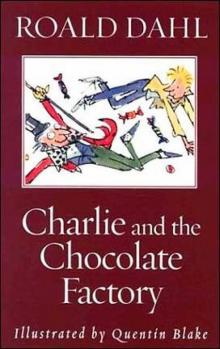 Charlie and the Chocolate Factory c-1
Charlie and the Chocolate Factory c-1 Boy
Boy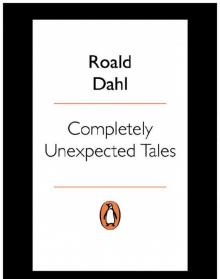 Completely Unexpected Tales
Completely Unexpected Tales Madness
Madness Innocence
Innocence Cruelty
Cruelty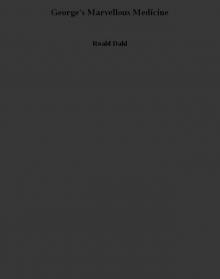 George's Marvellous Medicine
George's Marvellous Medicine